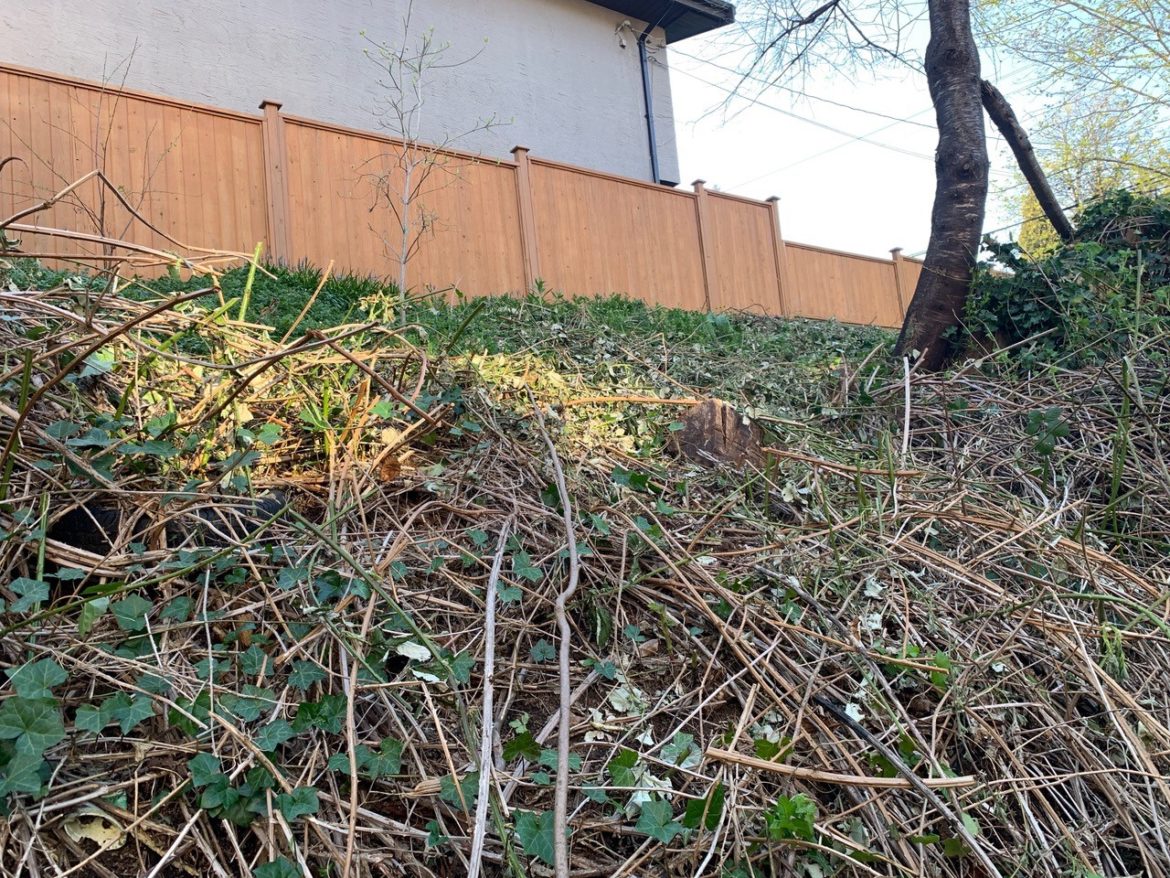Published: April 22, 2021
Matthew joined the ISCBC volunteer program in the summer of 2020, and has since volunteered over 500 hours towards bettering the health of local habitats in his community. Matthew is a leader by all definitions – he demonstrates a strong eagerness to learn as well as a passion for sharing his knowledge, providing humble mentorship to his fellow peers and volunteers through participation in volunteer committees, reporting of local invasives and facilitating of events.
One of Matthew’s passion projects involves a small creek that runs behind his home. See what he has to say about his restoration efforts!

When I moved to my current house in Burnaby three years ago, I learned there was a creek that runs through our property line. The creek drains into Burnaby Lake, which then drains into the Brunette River. Both sides of the creek were completely shrouded in Himalayan blackberry growth after who knows how many years of neglect. About a year ago, I started working to clear away the blackberry, clean up all the garbage found in and around the creek and replant with native riparian plants for the local birds and small mammals to enjoy!
After a long hiatus of not wanting to so much as think of blackberries and starting university, I’ve jumped back into the creek to get rid of as much blackberry—as well as an unwelcome amount of English ivy—as I can. There are a couple small stands of Salmonberry growing along the creek that got me very excited, and will be carefully caring for them, as well as any other native plants I find along the creek, to hopefully establish the soil with beneficial native plants. Having only Himalayan blackberry and English ivy growing on the sides of the creek has led to incredibly loose soil, not unlike sand. This is a great example of why it’s so important to protect creeks and other small waterways from invasive species. Loose soils on what is a rather steep slant can lead to soil creeping down into the water, and eventual blockage of the creek. This would have catastrophic consequences for all animals and plants downstream that rely on the creek to supply nutrients and water.
It’s been intense and tiring work, but that just makes it all the more rewarding!


Are you eager to get outdoors, get active, and get learning? Interested in having a real-world impact on your local community? Volunteer with ISCBC!
Share





